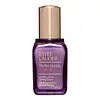What's inside
What's inside
 Key Ingredients
Key Ingredients

 Benefits
Benefits

 Concerns
Concerns

 Ingredients Side-by-side
Ingredients Side-by-side

Dimethicone
EmollientWater
Skin ConditioningPolysilicone-11
Hdi/Trimethylol Hexyllactone Crosspolymer
Silica
AbrasiveButylene Glycol
HumectantCaprylyl Methicone
Skin ConditioningSigesbeckia Orientalis Extract
Skin ConditioningSalvia Sclarea Extract
AntiseborrhoeicColeus Forskohlii Root Extract
EmollientChamomilla Recutita Flower Extract
MaskingPEG-10 Dimethicone
Skin ConditioningHydrolyzed Collagen
EmollientPalmaria Palmata Extract
Skin ProtectingGlycyrrhiza Glabra Root Extract
BleachingSilybum Marianum Extract
Skin ConditioningHordeum Vulgare Extract
EmollientPadina Pavonica Thallus Extract
Skin ConditioningArtemia Extract
Skin ConditioningPantethine
EmollientAlgae Extract
EmollientChlorella Vulgaris Extract
Skin ConditioningCholesterol
EmollientSqualane
EmollientBoswellia Serrata Extract
Skin ConditioningZea Mays Kernel Extract
Glycine Soja Protein
EmulsifyingCaffeine
Skin ConditioningWhey Protein
Skin ConditioningLinoleic Acid
CleansingLecithin
EmollientCollagen
MoisturisingAcetyl Hexapeptide-8
HumectantPalmitoyl Oligopeptide
CleansingGlycerin
HumectantYeast Extract
Skin ConditioningPolyquaternium-51
Skin ConditioningPhytosphingosine
Skin ConditioningTriticum Vulgare Germ Oil
EmollientDecarboxy Carnosine Hcl
Skin ConditioningPolysorbate 40
EmulsifyingPentylene Glycol
Skin ConditioningPropanediol
SolventLauryl PEG-9 Polydimethylsiloxyethyl Dimethicone
Skin ConditioningEthylhexylglycerin
Skin ConditioningAmmonium Acryloyldimethyltaurate/Vp Copolymer
Sodium PCA
HumectantPolymethylsilsesquioxane
Glyceryl Polymethacrylate
Zinc PCA
HumectantPropylene Glycol Dicaprate
EmollientSodium Chondroitin Sulfate
Skin ConditioningSodium Hyaluronate
HumectantIsohexadecane
EmollientPEG-8
HumectantTocopheryl Acetate
AntioxidantPolysorbate 80
EmulsifyingDisodium Distyrylbiphenyl Disulfonate
UV AbsorberLaureth-12
EmulsifyingAcrylamide/Sodium Acryloyldimethyltaurate Copolymer
Emulsion StabilisingCaprylyl Glycol
EmollientAminopropyl Ascorbyl Phosphate
AntioxidantXanthan Gum
EmulsifyingSodium Beta-Sitosteryl Sulfate
Skin ConditioningSodium Chloride
MaskingSodium Hydroxide
BufferingParfum
MaskingDisodium EDTA
BHT
AntioxidantPhenoxyethanol
PreservativeMica
Cosmetic ColorantCI 77891
Cosmetic ColorantDimethicone, Water, Polysilicone-11, Hdi/Trimethylol Hexyllactone Crosspolymer, Silica, Butylene Glycol, Caprylyl Methicone, Sigesbeckia Orientalis Extract, Salvia Sclarea Extract, Coleus Forskohlii Root Extract, Chamomilla Recutita Flower Extract, PEG-10 Dimethicone, Hydrolyzed Collagen, Palmaria Palmata Extract, Glycyrrhiza Glabra Root Extract, Silybum Marianum Extract, Hordeum Vulgare Extract, Padina Pavonica Thallus Extract, Artemia Extract, Pantethine, Algae Extract, Chlorella Vulgaris Extract, Cholesterol, Squalane, Boswellia Serrata Extract, Zea Mays Kernel Extract, Glycine Soja Protein, Caffeine, Whey Protein, Linoleic Acid, Lecithin, Collagen, Acetyl Hexapeptide-8, Palmitoyl Oligopeptide, Glycerin, Yeast Extract, Polyquaternium-51, Phytosphingosine, Triticum Vulgare Germ Oil, Decarboxy Carnosine Hcl, Polysorbate 40, Pentylene Glycol, Propanediol, Lauryl PEG-9 Polydimethylsiloxyethyl Dimethicone, Ethylhexylglycerin, Ammonium Acryloyldimethyltaurate/Vp Copolymer, Sodium PCA, Polymethylsilsesquioxane, Glyceryl Polymethacrylate, Zinc PCA, Propylene Glycol Dicaprate, Sodium Chondroitin Sulfate, Sodium Hyaluronate, Isohexadecane, PEG-8, Tocopheryl Acetate, Polysorbate 80, Disodium Distyrylbiphenyl Disulfonate, Laureth-12, Acrylamide/Sodium Acryloyldimethyltaurate Copolymer, Caprylyl Glycol, Aminopropyl Ascorbyl Phosphate, Xanthan Gum, Sodium Beta-Sitosteryl Sulfate, Sodium Chloride, Sodium Hydroxide, Parfum, Disodium EDTA, BHT, Phenoxyethanol, Mica, CI 77891
 Reviews
Reviews

Ingredients Explained
These ingredients are found in both products.
Ingredients higher up in an ingredient list are typically present in a larger amount.
Pentylene glycol is typically used within a product to thicken it. It also adds a smooth, soft, and moisturizing feel to the product. It is naturally found in plants such as sugar beets.
The hydrophilic trait of Pentylene Glycol makes it a humectant. As a humectant, Pentylene Glycol helps draw moisture from the air to your skin. This can help keep your skin hydrated.
This property also makes Pentylene Glycol a great texture enhancer. It can also help thicken or stabilize a product.
Pentylene Glycol also acts as a mild preservative and helps to keep a product microbe-free.
Some people may experience mild eye and skin irritation from Pentylene Glycol. We always recommend speaking with a professional about using this ingredient in your routine.
Pentylene Glycol has a low molecular weight and is part of the 1,2-glycol family.
Learn more about Pentylene GlycolPhenoxyethanol is a preservative that has germicide, antimicrobial, and aromatic properties. Studies show that phenoxyethanol can prevent microbial growth. By itself, it has a scent that is similar to that of a rose.
It's often used in formulations along with Caprylyl Glycol to preserve the shelf life of products.
Water. It's the most common cosmetic ingredient of all. You'll usually see it at the top of ingredient lists, meaning that it makes up the largest part of the product.
So why is it so popular? Water most often acts as a solvent - this means that it helps dissolve other ingredients into the formulation.
You'll also recognize water as that liquid we all need to stay alive. If you see this, drink a glass of water. Stay hydrated!
Learn more about WaterXanthan gum is used as a stabilizer and thickener within cosmetic products. It helps give products a sticky, thick feeling - preventing them from being too runny.
On the technical side of things, xanthan gum is a polysaccharide - a combination consisting of multiple sugar molecules bonded together.
Xanthan gum is a pretty common and great ingredient. It is a natural, non-toxic, non-irritating ingredient that is also commonly used in food products.
Learn more about Xanthan GumZinc PCA (or "zinc salt") differs slightly from zinc itself. PCA stands for pyrrolidone carboxylic acid. However, Zinc PCA comes from zinc.
It can help reduce redness, regulate sebum, and promote the general healing process of the skin.
Zinc PCA tends to be especially useful for those with oily, acne-prone skin. It's certainly an ingredient worth trying out!
Learn more about Zinc PCA